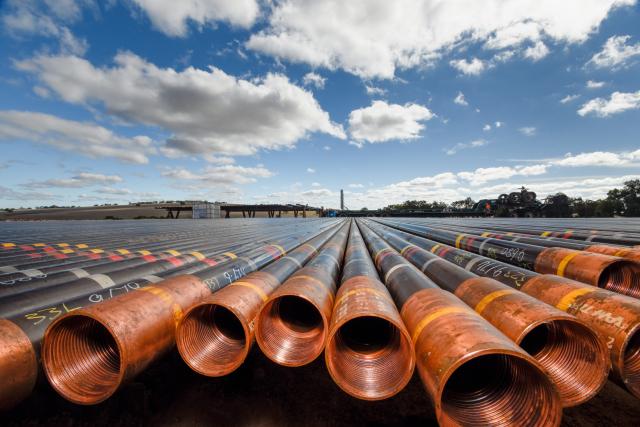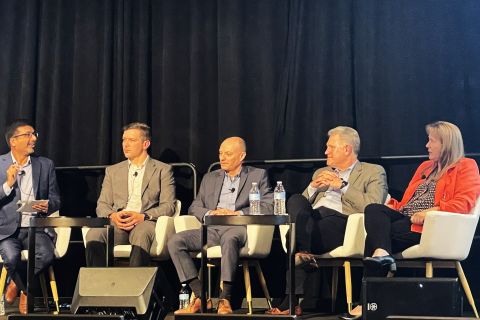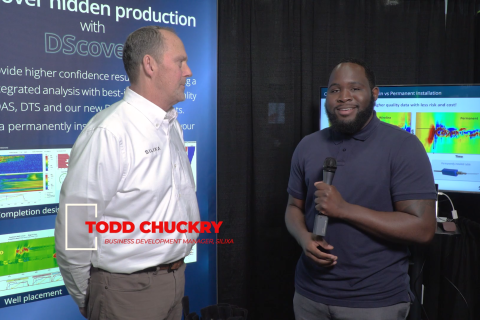
Hunting aims to have $100 million of sales within its Energy Transition group, formed in December 2022, by 2030. (Source: Ian Geraint Jones/Shutterstock)
With a history spanning 150 years, global energy services company Hunting Plc knows about change.
Having recently launched its 2030 strategy, Hunting is putting its expertise in oil country tubular goods (OCTG) and precision-engineered products to use across multiple segments. The company is looking to strengthen revenue streams by going deeper into the geothermal market and tapping the carbon capture space while continuing to meet the oil and gas sector’s needs.
“Change is our traveling companion,” as Hunting’s website states.
With early roots in the oil tanker business and aviation, the international energy services company leaped more than 20 years ago into geothermal with projects in Iceland, the Philippines, Indonesia and, most recently, the U.K.
Hunting continues to evolve as the energy transition puts the spotlight on lower emissions.
“If you look at the whole energy transition segment for Hunting, that geothermal and carbon capture world is really going to be a subset of our existing OCTG business,” Hunting CEO Jim Johnson told Hart Energy. “We have to go out there and do a lot of investment,” including on qualification testing for materials such as premium connections.
OCTG synergies
Hunting’s 2030 strategy—details of which will be shared in September—includes developing a market position in the energy transition, where synergies with carbon capture and geothermal are perhaps most visible with casing and tubing designs alongside perforating systems and well intervention tools.
“The big volume is really OCTG-related, and the key going forward is going to be the global demand for some of these pipe materials with nickel content, with chrome content,” Johnson said. “It’s really going to be a strain, I think, on the supply chain.”
Geothermal energy in electricity generation has risen about 3.5% annually, hitting a total installed capacity of nearly 16 gigawatts in 2021, according to the International Renewable Energy Agency. Despite the growth, the geothermal share of total installed renewable electricity capacity was only 0.5%.
“We’ve had a good experience with geothermal projects [in] Iceland, Philippines, Indonesia, Southern California. We’ve played in that for a long time,” Johnson said. “I think the difference now is if you look at the quantum of total geothermal activity from a power generation point of view, it’s been a limited [number] of wells being drilled because of cost and not so much of a focus on the renewable side. It was easier to build coal plants or whatever.”
However, the renewables push seen in the last two or so years is changing that.
“Geothermal is getting a second life,” Johnson said.
Development of carbon capture, utilization and storage projects is also picking up. The International Energy Agency reported in September 2022 that based on the project pipeline at the time, annual capture capacity from new construction and retrofits rise to about 70 metric tons (mt) CO2 from hydrogen production, 70 mt CO2 from power generation and 20 mt CO2 from industrial facilities such as cement, steel and chemicals by 2030.
“We’re actually quoting [companies] like Exxon right now for some carbon capture work in the Galveston Bay,” Johnson said, noting Hunting is carrying out titanium riser work with Exxon Mobil in Guyana.
Looking forward
Hunting is eyeing growth opportunities in the Asia-Pacific region and North America, with a mission to increase revenues.
The company in March said it returned to profitability in 2022, reporting full-year adjusted profit from operations of $14.6 million. Improved oil market conditions with higher commodity prices led to more drilling activity, boosting Hunting’s external sales order book by 124% last year to $473 million. The company’s subsea technologies unit also saw a rise in sales, jumping 139% to about $105 million, driven by new orders for steel and titanium stress joints for projects in the Gulf of Mexico and South America.
Hunting aims to have $100 million of sales within its energy transition group, formed in December 2022, by 2030.
“The impact on our company’s performance in ‘23 is probably going to be limited,” Johnson said. “We think we’re still going to generate $20, $30, $40 million of revenue this year, or the potential’s there because of the geothermal side of the business. But I think to get to a nine-figure run rate, it’s going to be in ‘24 or ‘25 before we realize that.”
Having spent decades on design and metallurgy, Johnson said he believes Hunting is prepared for challenges facing the carbon capture and geothermal sectors. As more service companies expand in these sectors, he said the company looks to differentiate itself by doing what it has done on the oil and gas side: identifying opportunities and following up with services needed.
Though Hunting plans to grow its energy transition business, primary focus remains on “precision engineering to service the global oil and gas market,” according to the company’s strategic initiatives.
Johnson pointed out that despite energy players committing about $1 trillion to renewables in the last five years or so, fossil fuels’ share in the total energy mix remains above 80%.
“We’re going to be in this business for a long time,” he said. “In total, energy demand will continue to grow and renewable energies in the transformation will grow, but oil and gas will still be dominant at least 20 years from now.”
Recommended Reading
Going with the Flow: Universities, Operators Team on Flow Assurance Research
2024-03-05 - From Icy Waterfloods to Gas Lift Slugs, operators and researchers at Texas Tech University and the Colorado School of Mines are finding ways to optimize flow assurance, reduce costs and improve wells.
Fracturing’s Geometry Test
2024-02-12 - During SPE’s Hydraulic Fracturing Technical Conference, industry experts looked for answers to their biggest test – fracture geometry.
Haynesville’s Harsh Drilling Conditions Forge Tougher Tech
2024-04-10 - The Haynesville Shale’s high temperatures and tough rock have caused drillers to evolve, advancing technology that benefits the rest of the industry, experts said.
Exclusive: Silixa’s Distributed Fiber Optics Solutions for E&Ps
2024-03-19 - Todd Chuckry, business development manager for Silixa, highlights the company's DScover and Carina platforms to help oil and gas operators fully understand their fiber optics treatments from start to finish in this Hart Energy Exclusive.
2023-2025 Subsea Tieback Round-Up
2024-02-06 - Here's a look at subsea tieback projects across the globe. The first in a two-part series, this report highlights some of the subsea tiebacks scheduled to be online by 2025.






